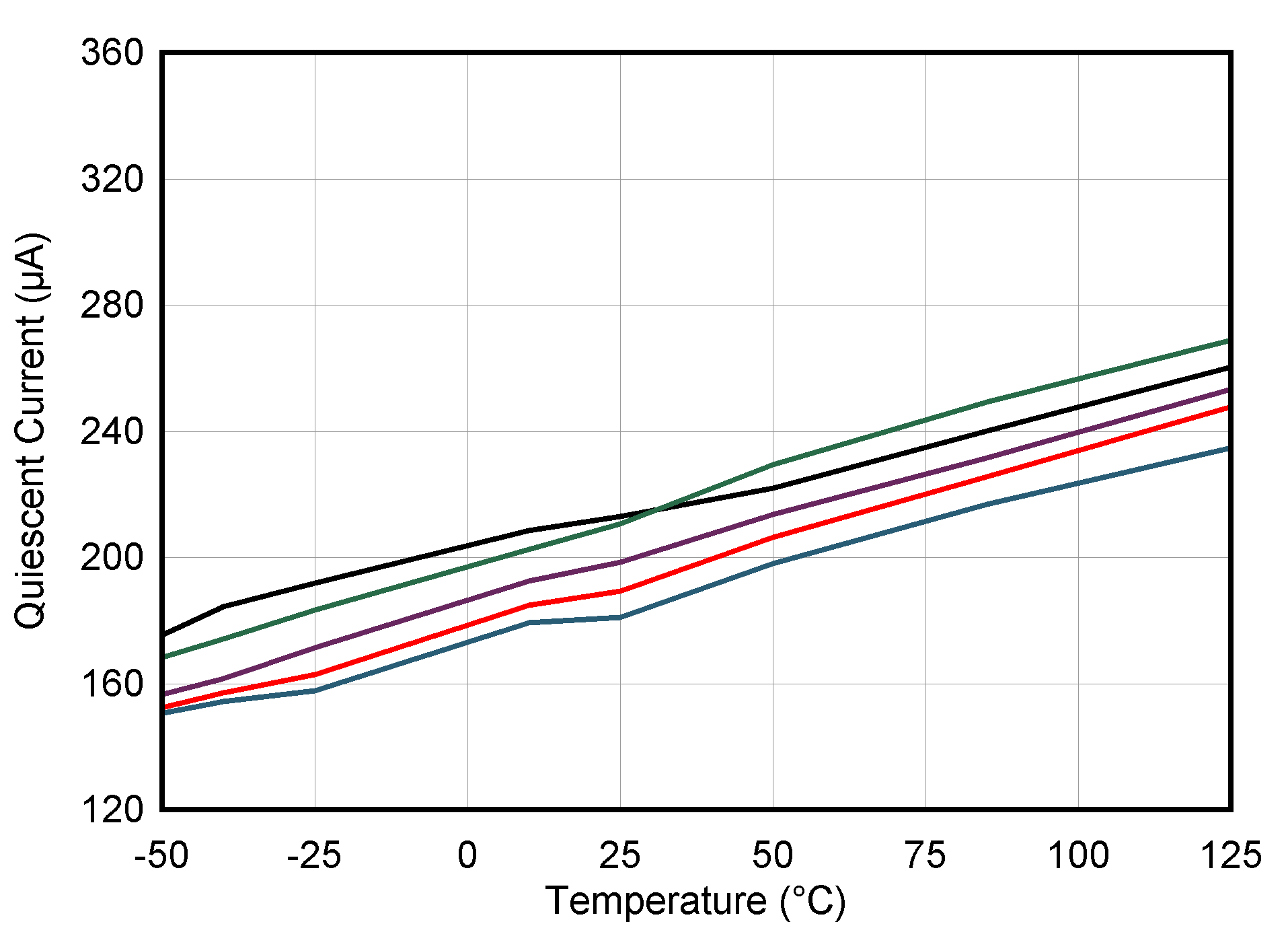SBOSA11E March 2020 – December 2023 OPA206 , OPA2206 , OPA4206
PRODUCTION DATA
- 1
- 1 Features
- 2 Applications
- 3 Description
- 4 Pin Configuration and Functions
- 5 Specifications
- 6 Parameter Measurement Information
- 7 Detailed Description
- 8 Application and Implementation
- 9 Device and Documentation Support
- 10Revision History
- 11Mechanical, Packaging, and Orderable Information
Package Options
Refer to the PDF data sheet for device specific package drawings
Mechanical Data (Package|Pins)
- D|8
Thermal pad, mechanical data (Package|Pins)
Orderable Information
5.9 Typical Characteristics
at TA = 25°C, VS = ±15 V, VCM = VOUT = mid-supply, and RL = 10 kΩ (unless otherwise noted)
Table 5-1 Table of Graphs
| DESCRIPTION | FIGURE |
|---|---|
| Offset Voltage Production Distribution at 25°C | Figure 5-1 |
| Offset Voltage Distribution at 125°C | Figure 5-2 |
| Offset Voltage Distribution at –40°C | Figure 5-3 |
| Offset Voltage vs Temperature | Figure 5-4 |
| Offset Voltage Drift Production Distribution | Figure 5-5 |
| Offset Voltage vs Output Voltage | Figure 5-6 |
| Offset Voltage vs Power Supply Voltage | Figure 5-7 |
| Power-Supply Rejection Ratio vs Temperature | Figure 5-8 |
| Power-Supply and Common-Mode Rejection Ratio vs Frequency | Figure 5-9 |
| Common-Mode Rejection Ratio vs Temperature | Figure 5-10 |
| Offset Voltage vs Common-Mode Voltage | Figure 5-11 |
| Offset Voltage vs VCM at Low Supply | Figure 5-12 |
| Offset Voltage vs VCM at High Supply | Figure 5-13 |
| Open-Loop Gain and Phase vs Frequency | Figure 5-14 |
| Open-Loop Gain vs Distance From Supply | Figure 5-15 |
| Open-Loop Gain vs Temperature | Figure 5-16 |
| Closed-Loop Gain vs Frequency | Figure 5-17 |
| Input Bias Production Distribution | Figure 5-18 |
| Input Bias vs Common-Mode Voltage | Figure 5-19 |
| Input Bias and Input Offset Current vs Temperature | Figure 5-20 |
| Input Bias vs. Overvoltage-Protected Common-Mode Range | Figure 5-21 |
| Input Offset Current Production Distribution | Figure 5-22 |
| Voltage Noise Density vs Frequency | Figure 5-23 |
| 0.1-Hz to 10-Hz Noise | Figure 5-24 |
| Total Harmonic Distortion + Noise Ratio vs Frequency | Figure 5-25 |
| Total Harmonic Distortion + Noise Ratio vs Output Amplitude | Figure 5-26 |
| Current Noise vs Frequency | Figure 5-27 |
| Maximum Output Voltage vs Frequency | Figure 5-28 |
| Output Voltage Swing vs Output Sourcing Current | Figure 5-29 |
| Output Voltage Swing vs Output Sinking Current | Figure 5-30 |
| Open-Loop Output Impedance vs Frequency | Figure 5-31 |
| No Phase Reversal | Figure 5-32 |
| Small-Signal Overshoot vs Capacitive Load, Gain = 1 | Figure 5-33 |
| Small-Signal Overshoot vs Capacitive Load, Gain = –1 | Figure 5-34 |
| Phase Margin vs Capacitive Load | Figure 5-35 |
| Positive Overload Recovery, Gain = –1 | Figure 5-36 |
| Negative Overload Recovery, Gain = –1 | Figure 5-37 |
| Settling Time | Figure 5-38 |
| Small-Signal Step Response, Gain = 1 | Figure 5-39 |
| Small-Signal Step Response, Gain = –1 | Figure 5-40 |
| Large-Signal Step Response, Gain = 1 | Figure 5-41 |
| Large-Signal Step Response, Gain = –1 | Figure 5-42 |
| Short-Circuit Current vs Temperature | Figure 5-43 |
| Electromagnetic Interference Rejection (EMIRR) | Figure 5-44 |
| Quiescent Current vs Supply Voltage | Figure 5-45 |
| Quiescent Current vs Temperature | Figure 5-46 |

| TA = 25°C |

| TA = –40°C |

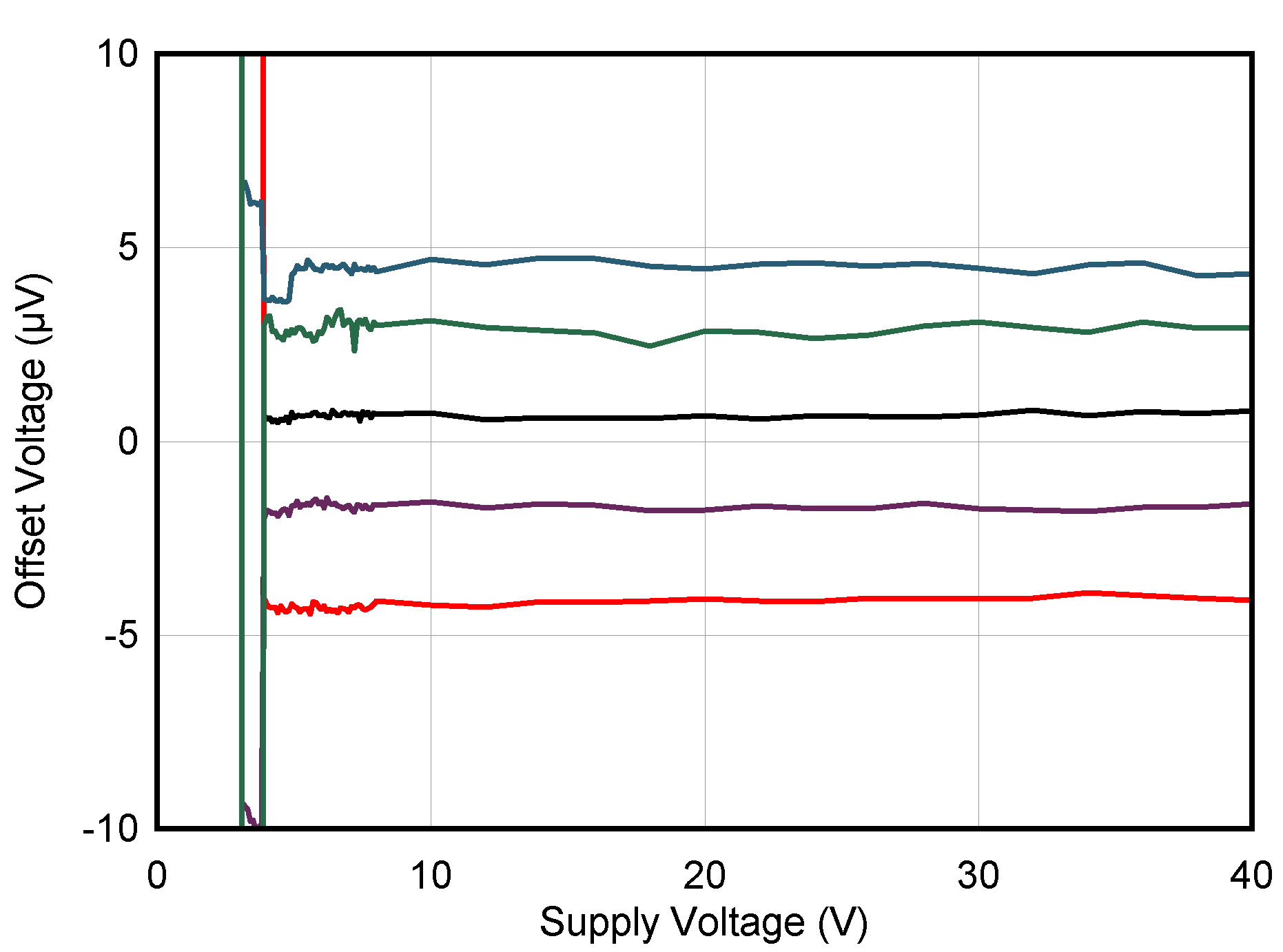
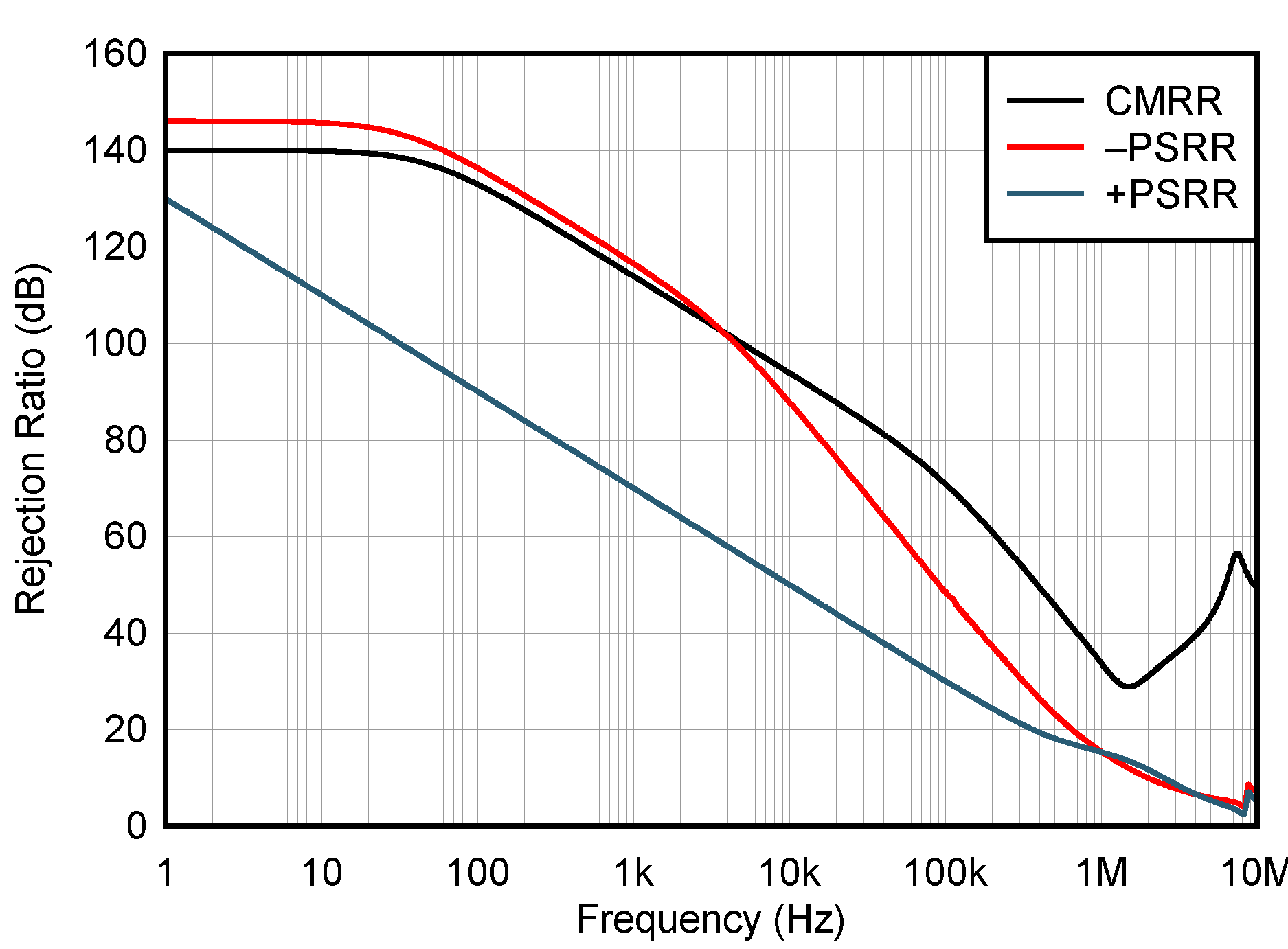
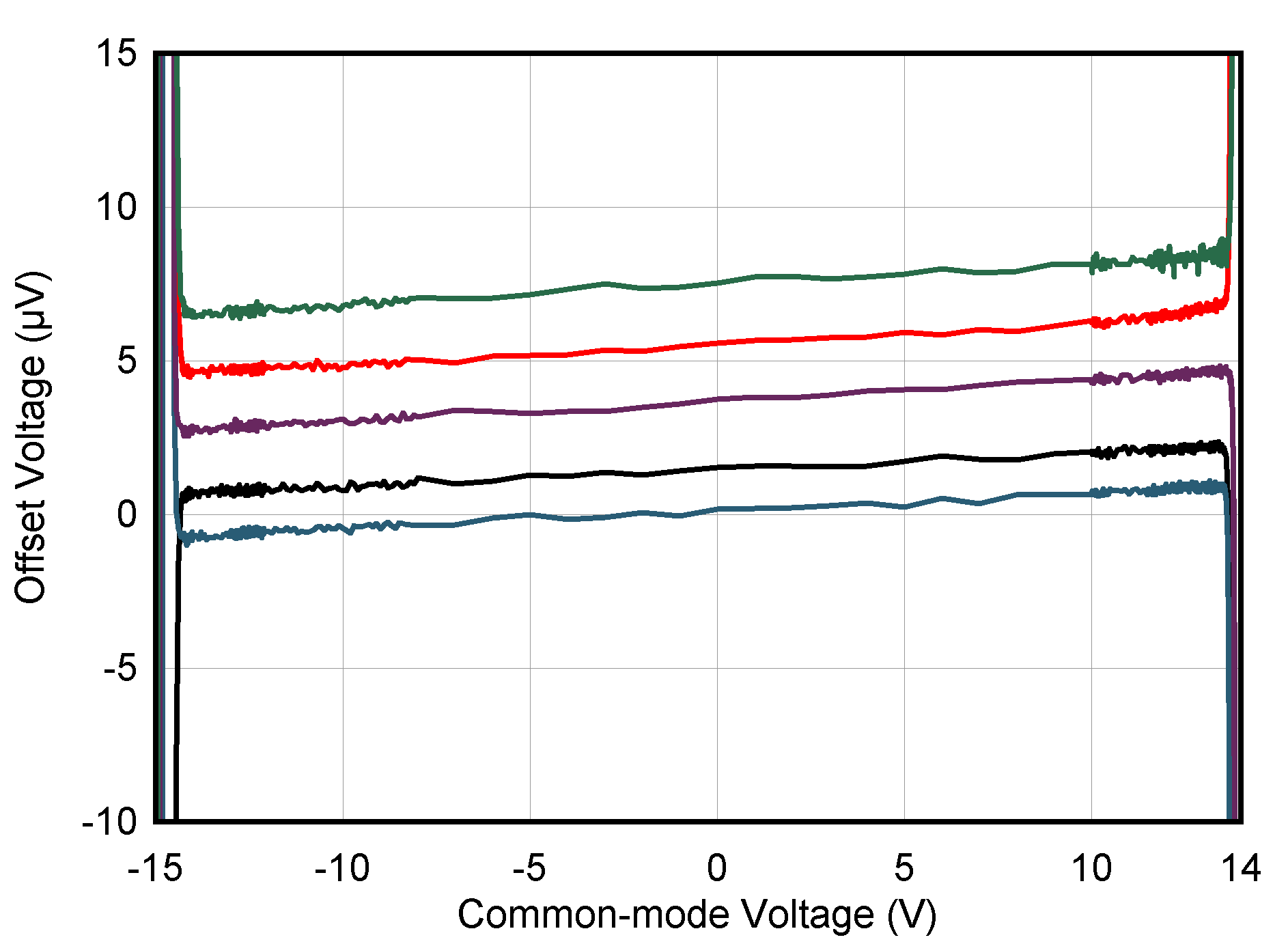
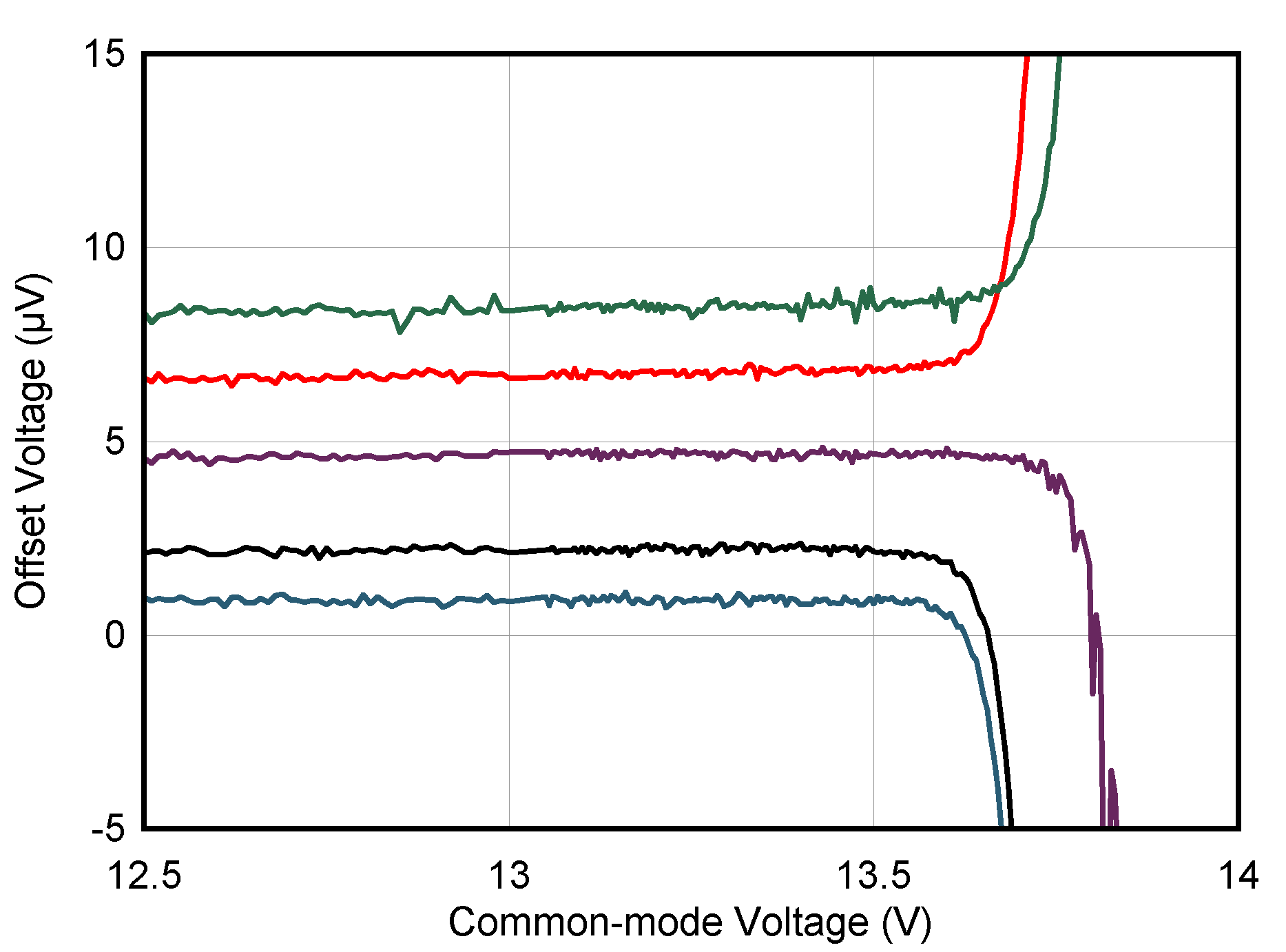
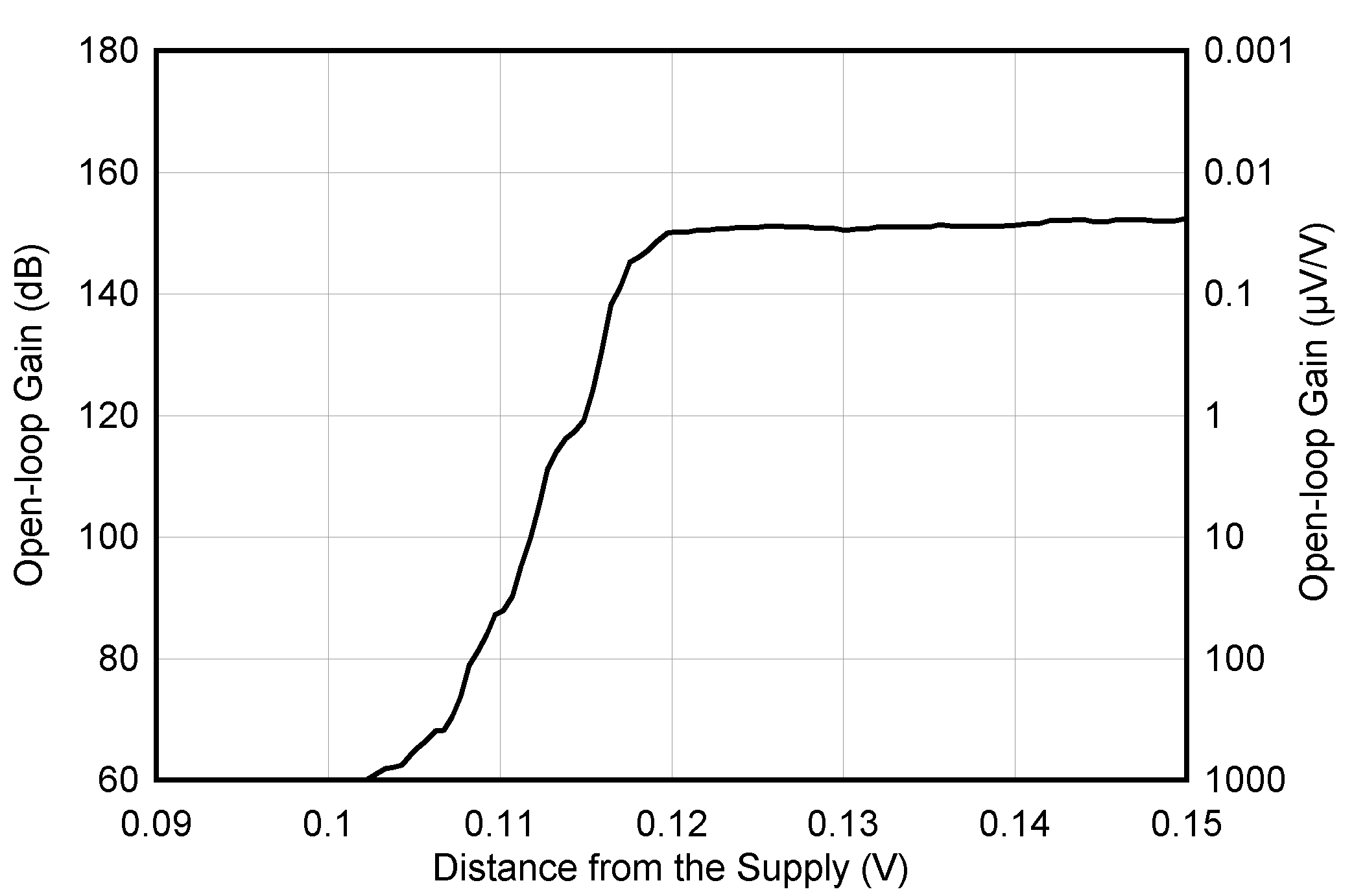

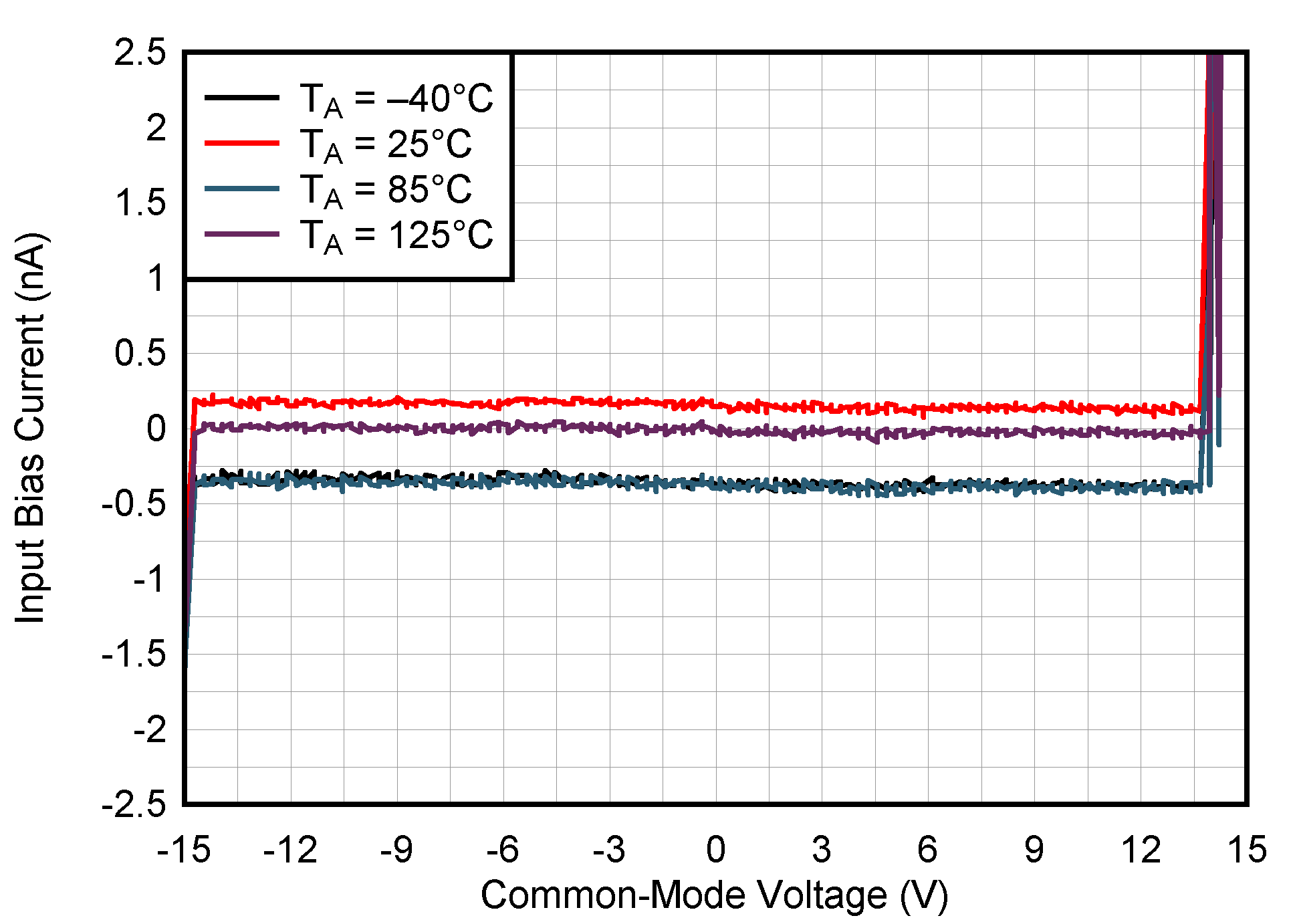
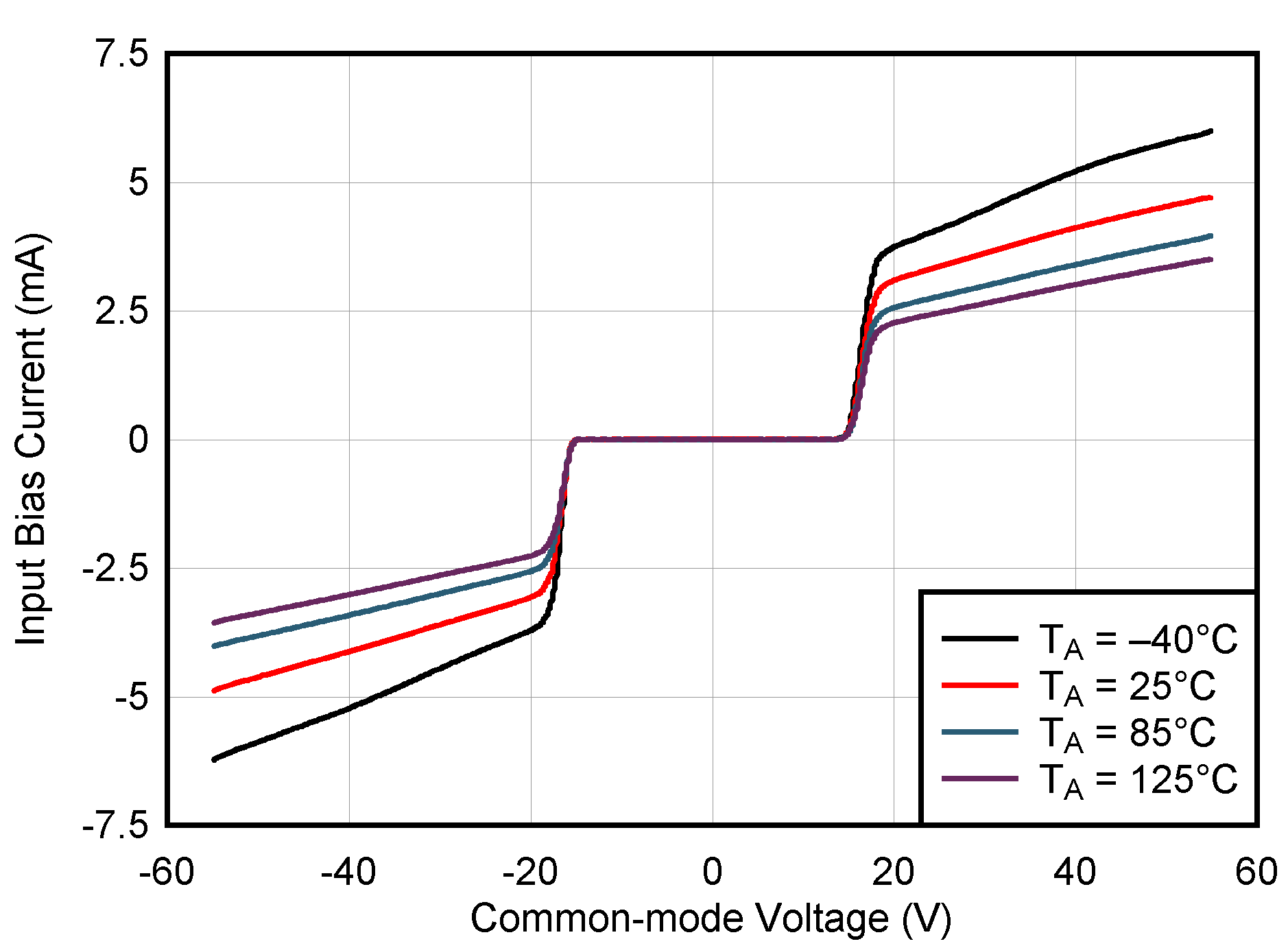

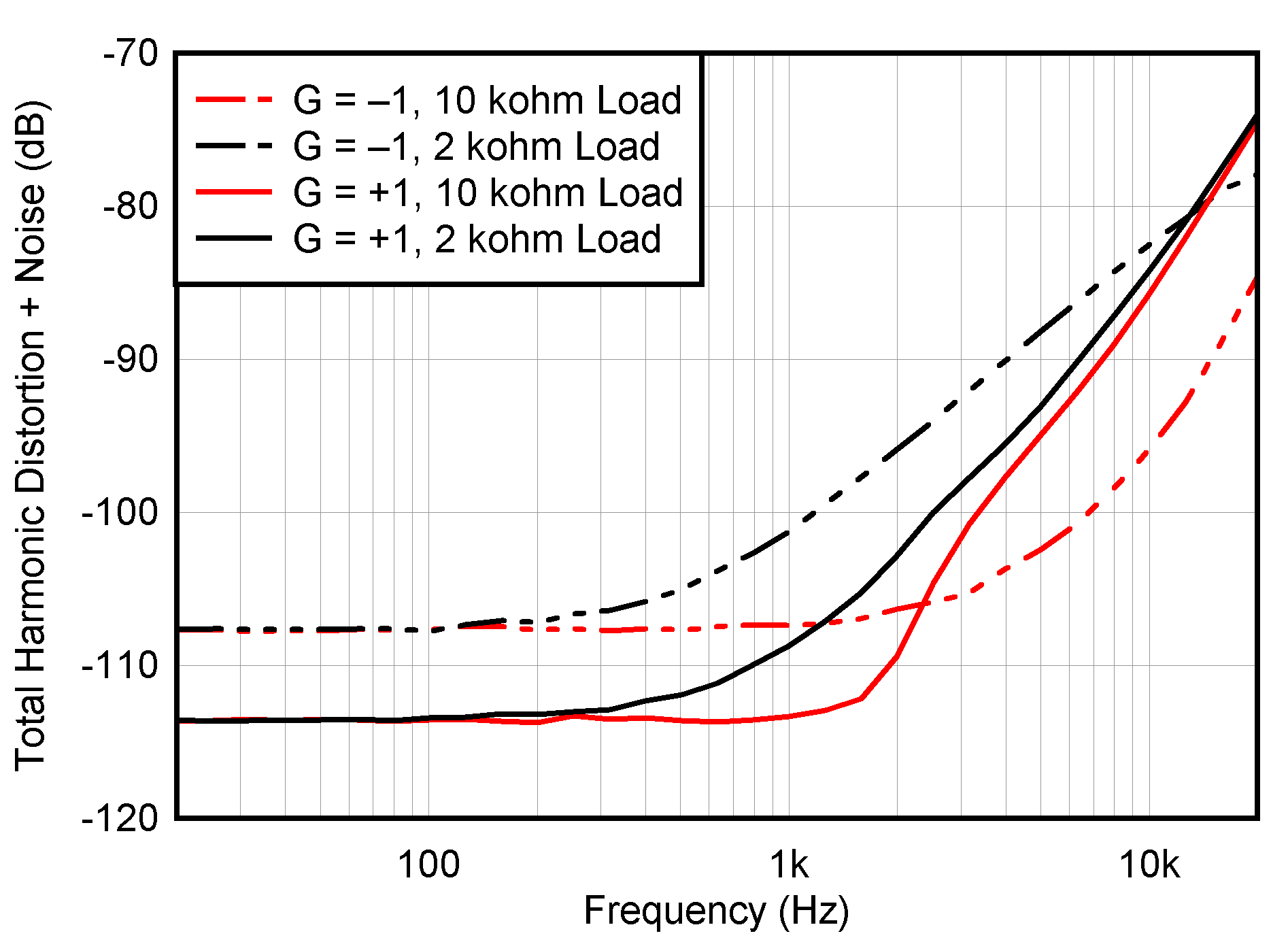
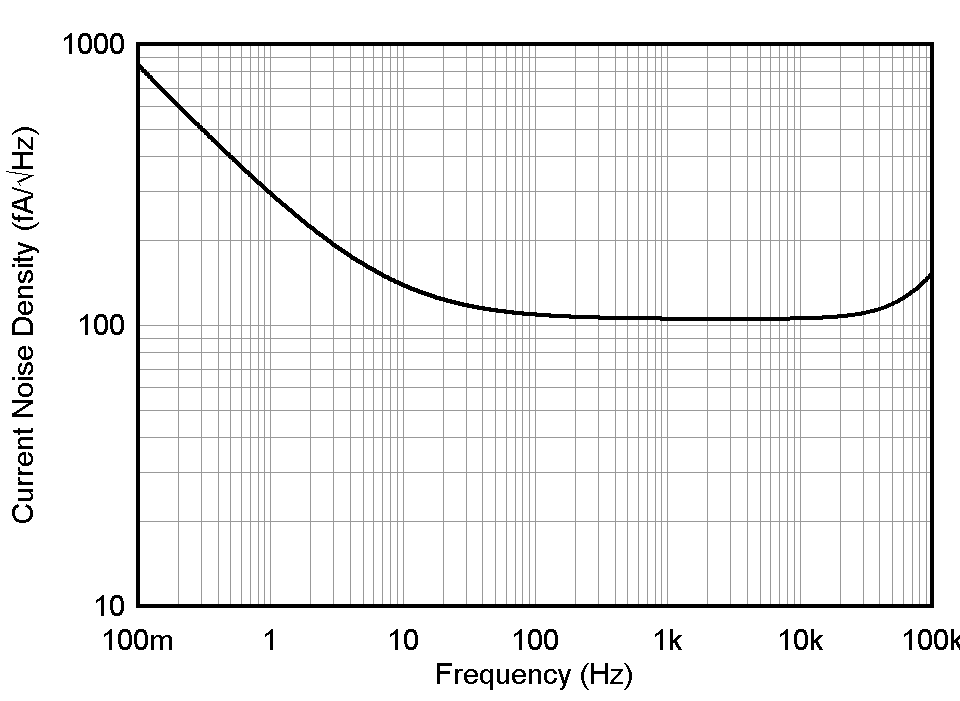
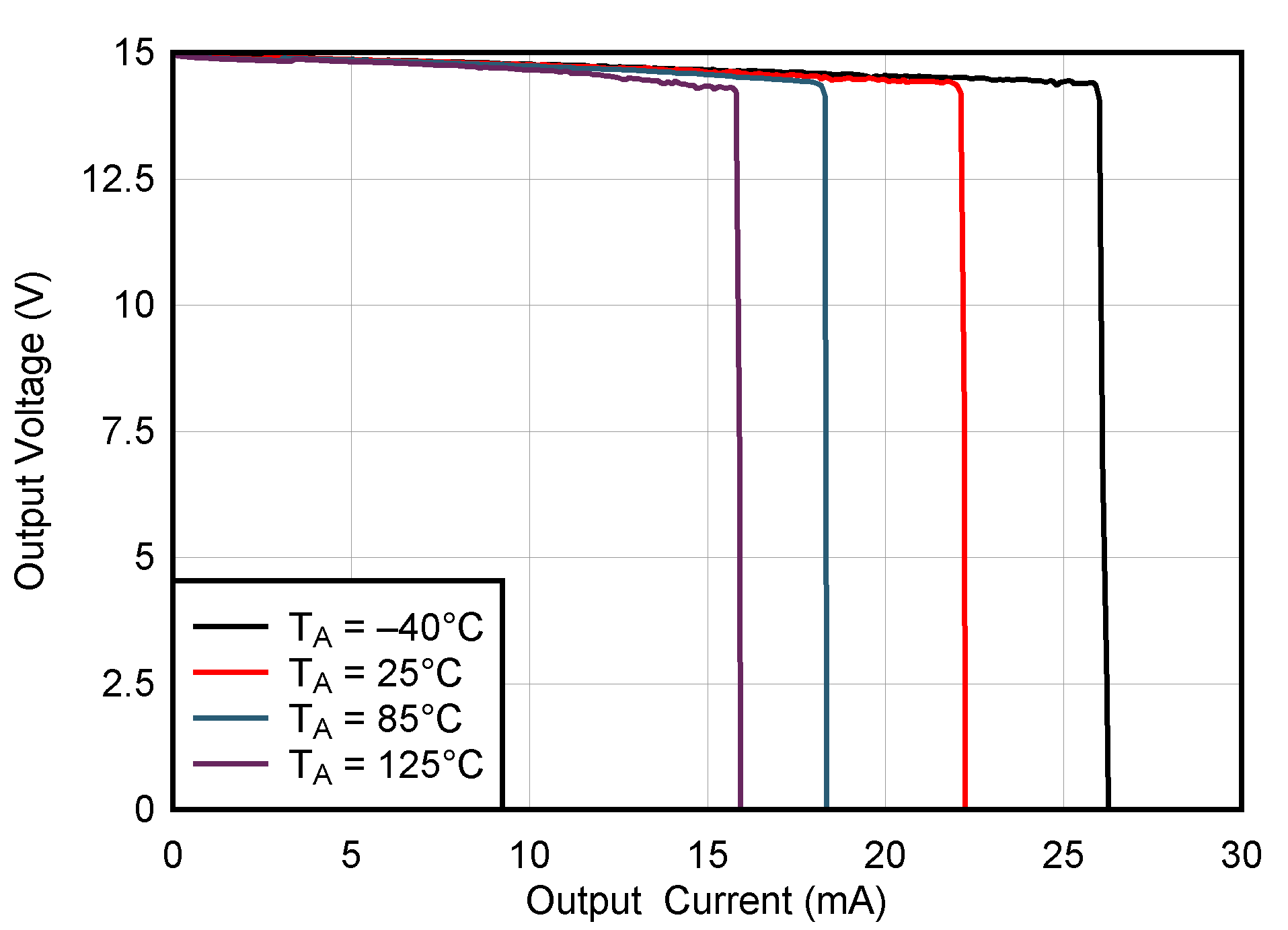
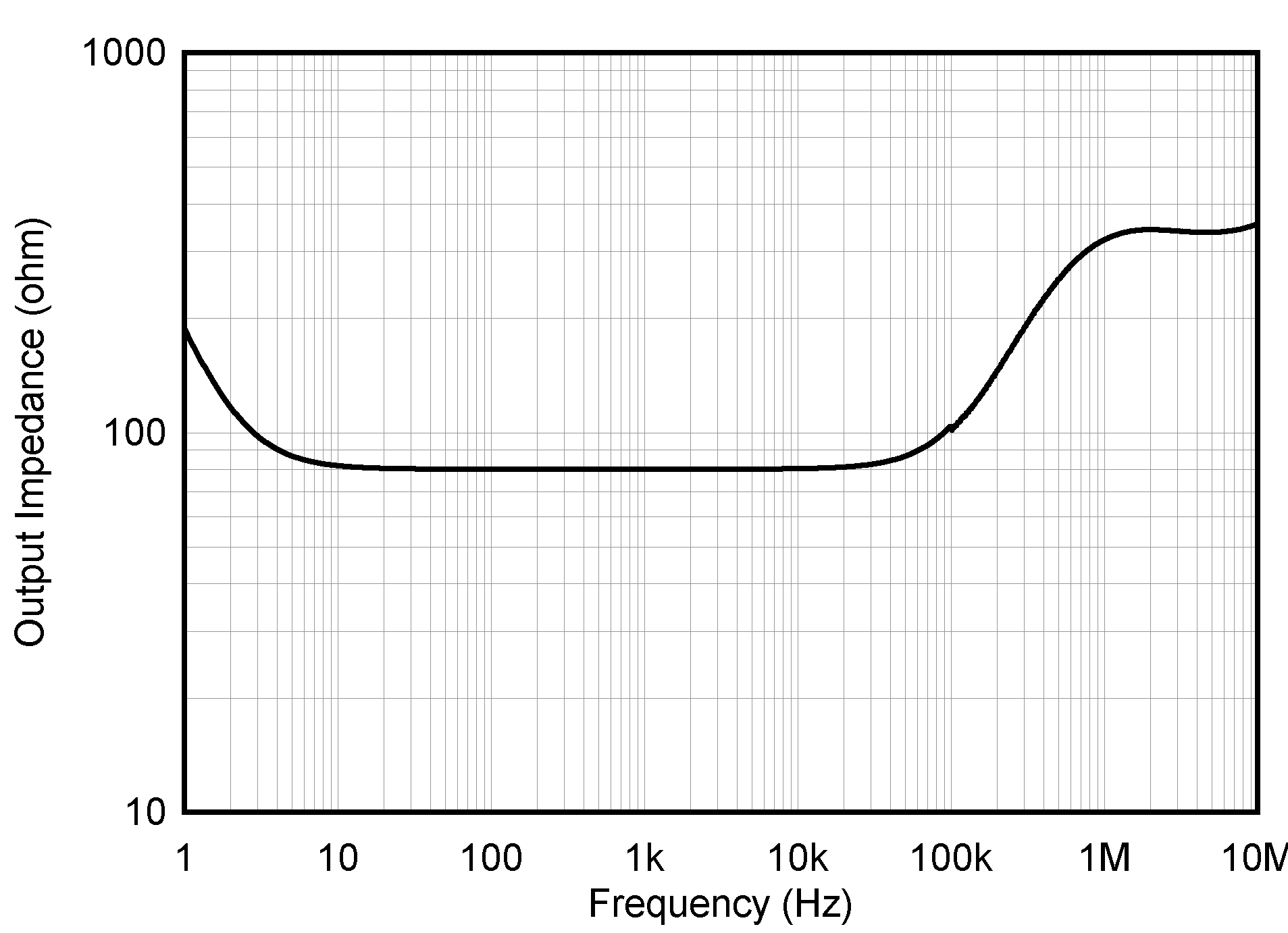

| Gain = 1 |
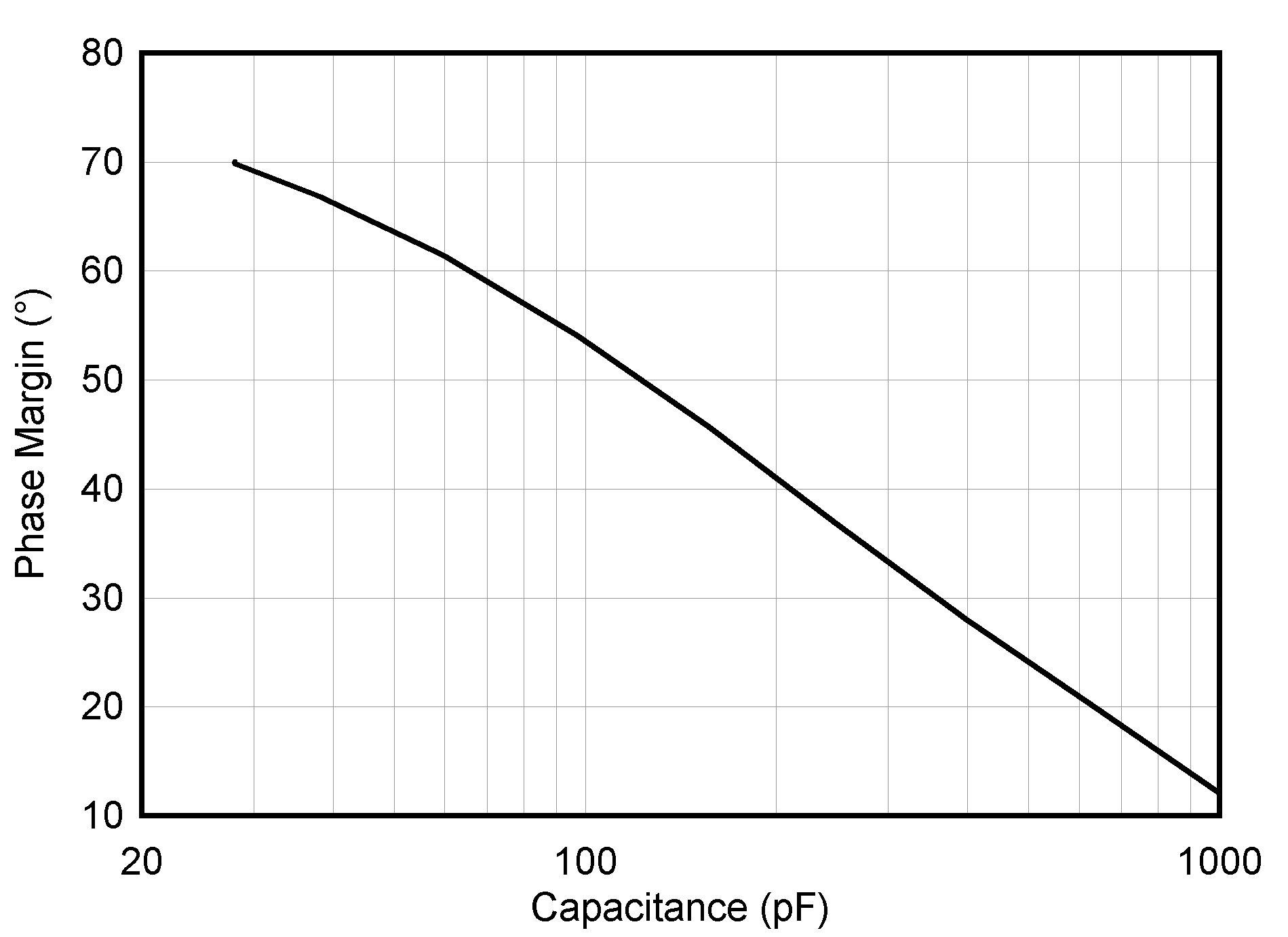

| Gain = –1 |
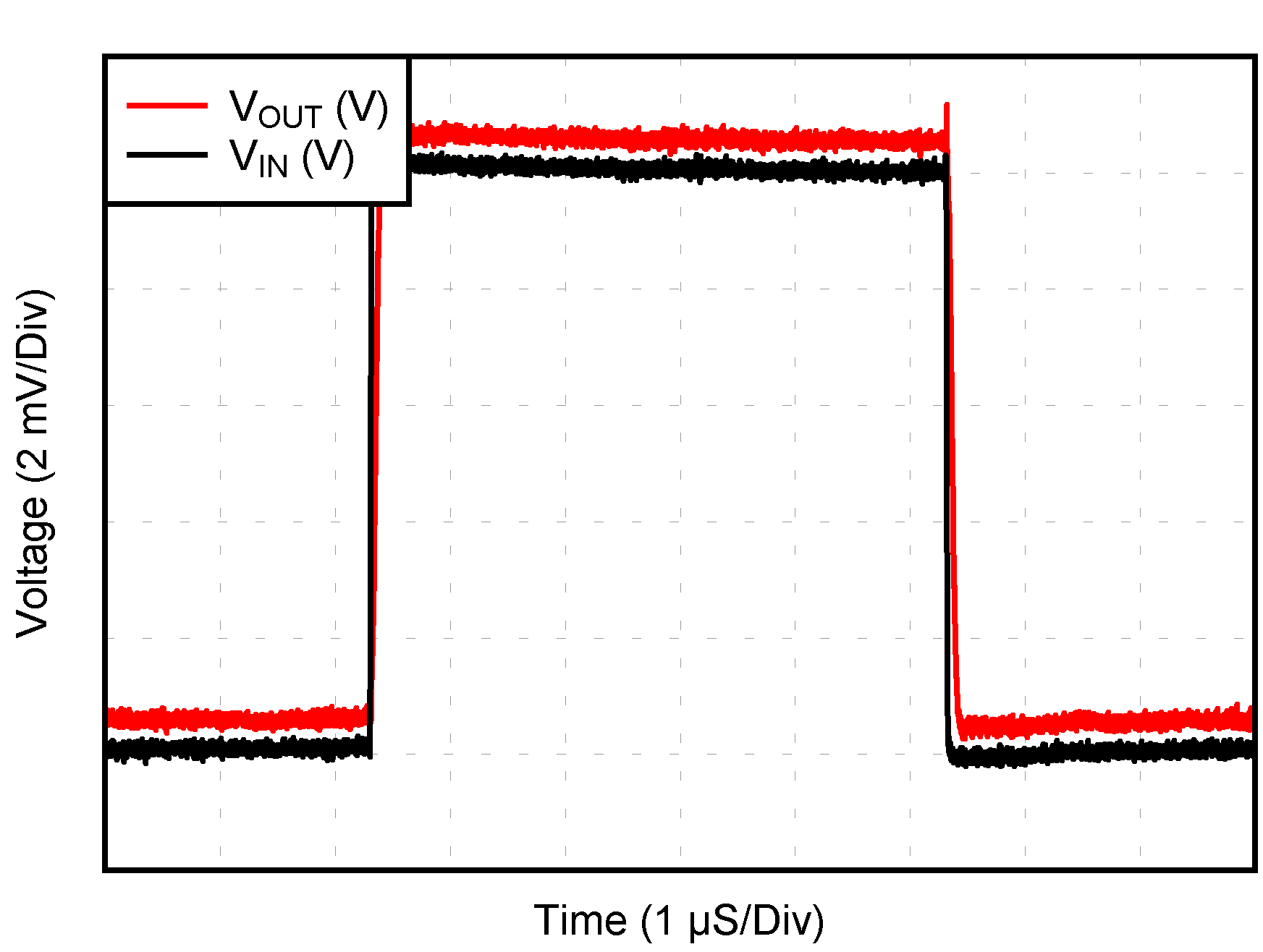
| Gain = 1 |

| Gain = 1 |
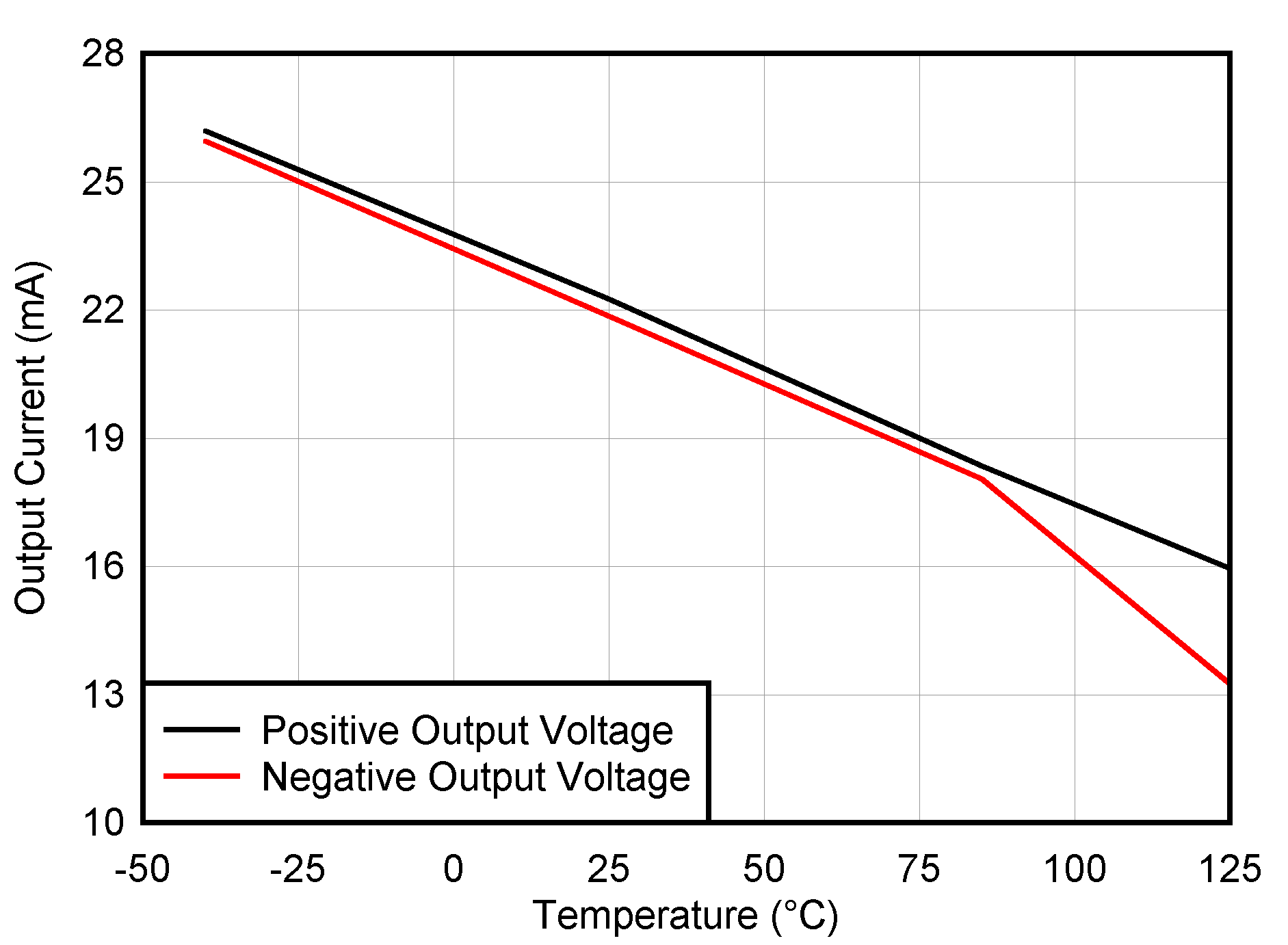
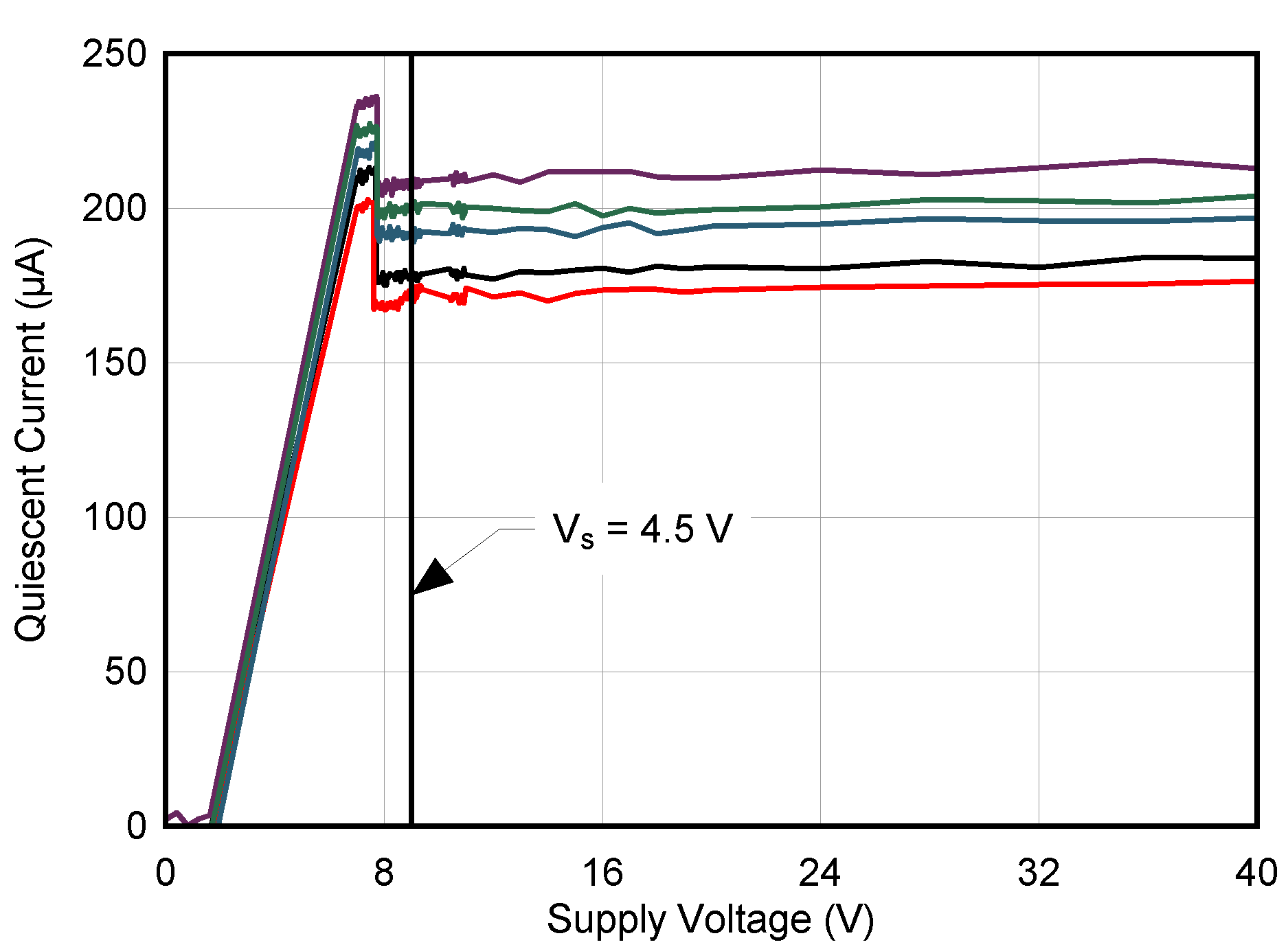

| TA = 125°C |
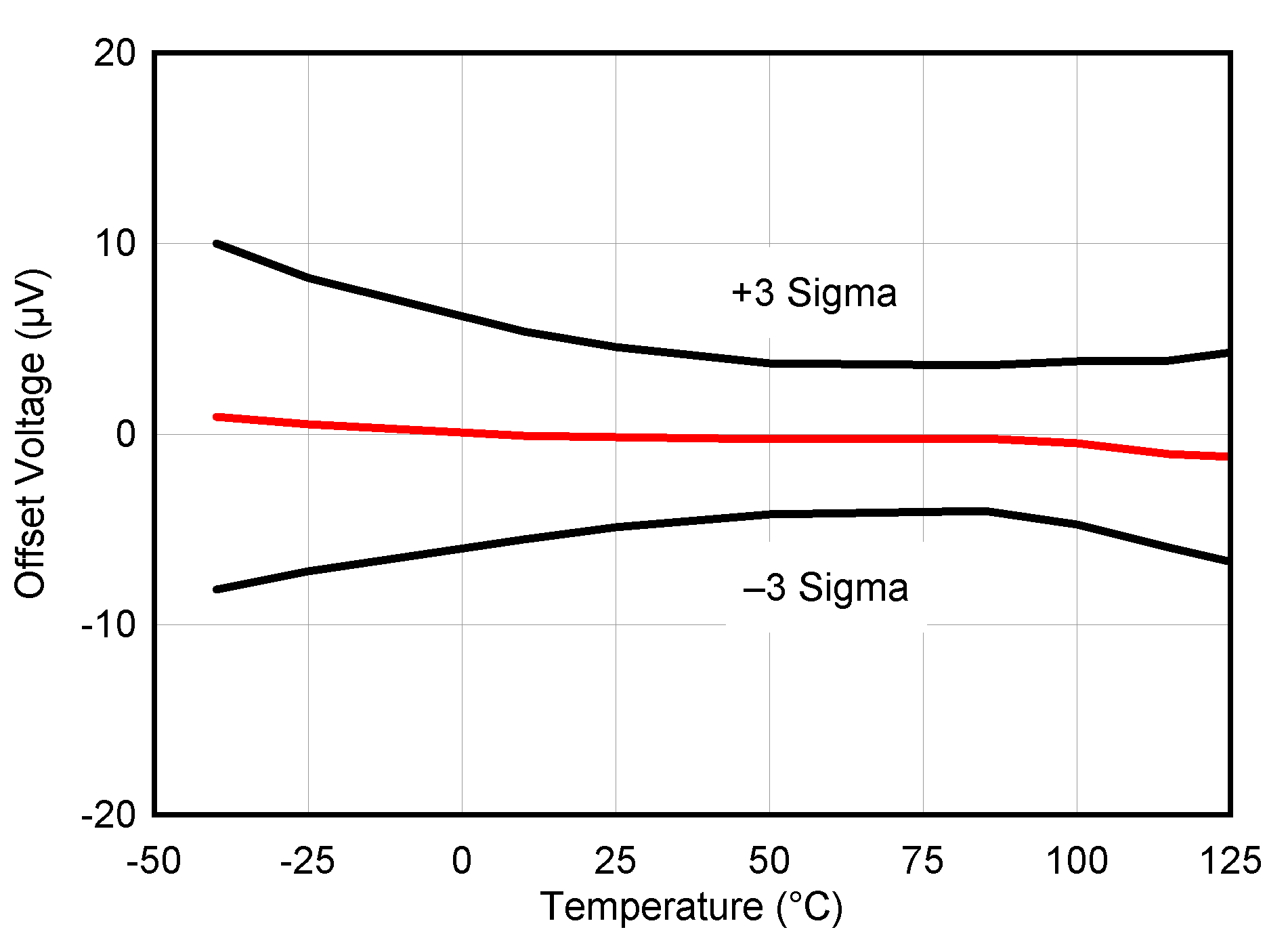
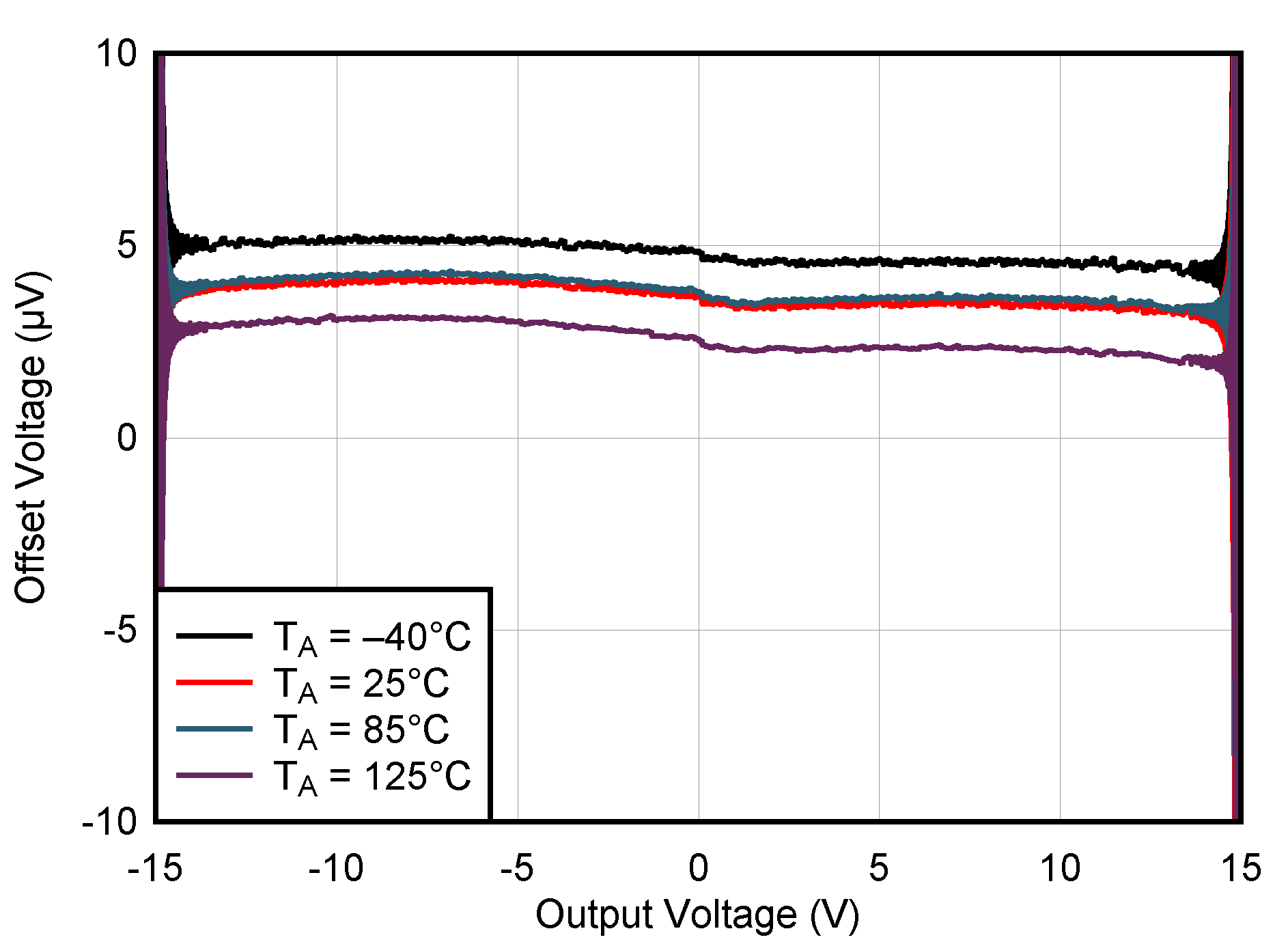
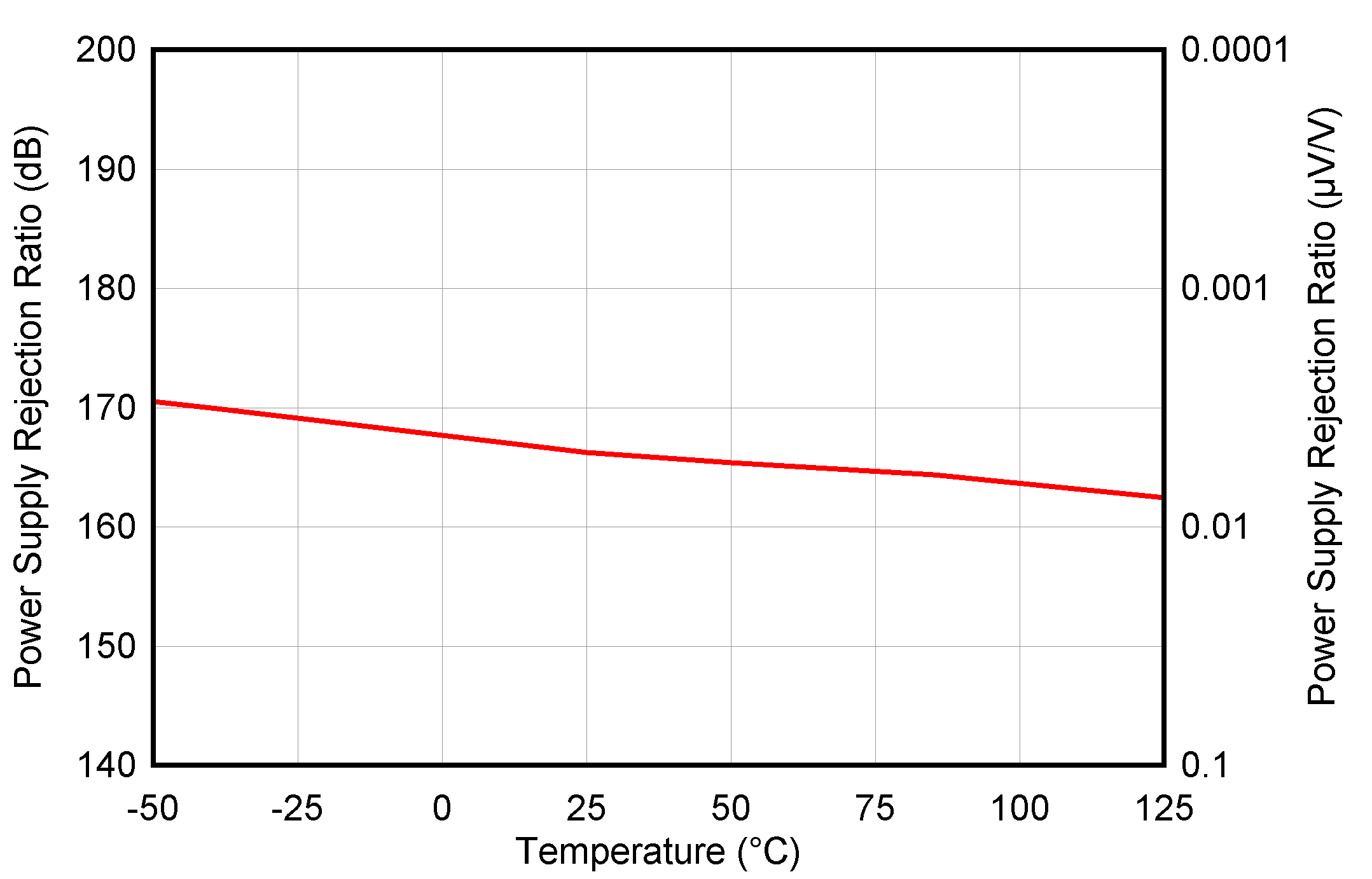
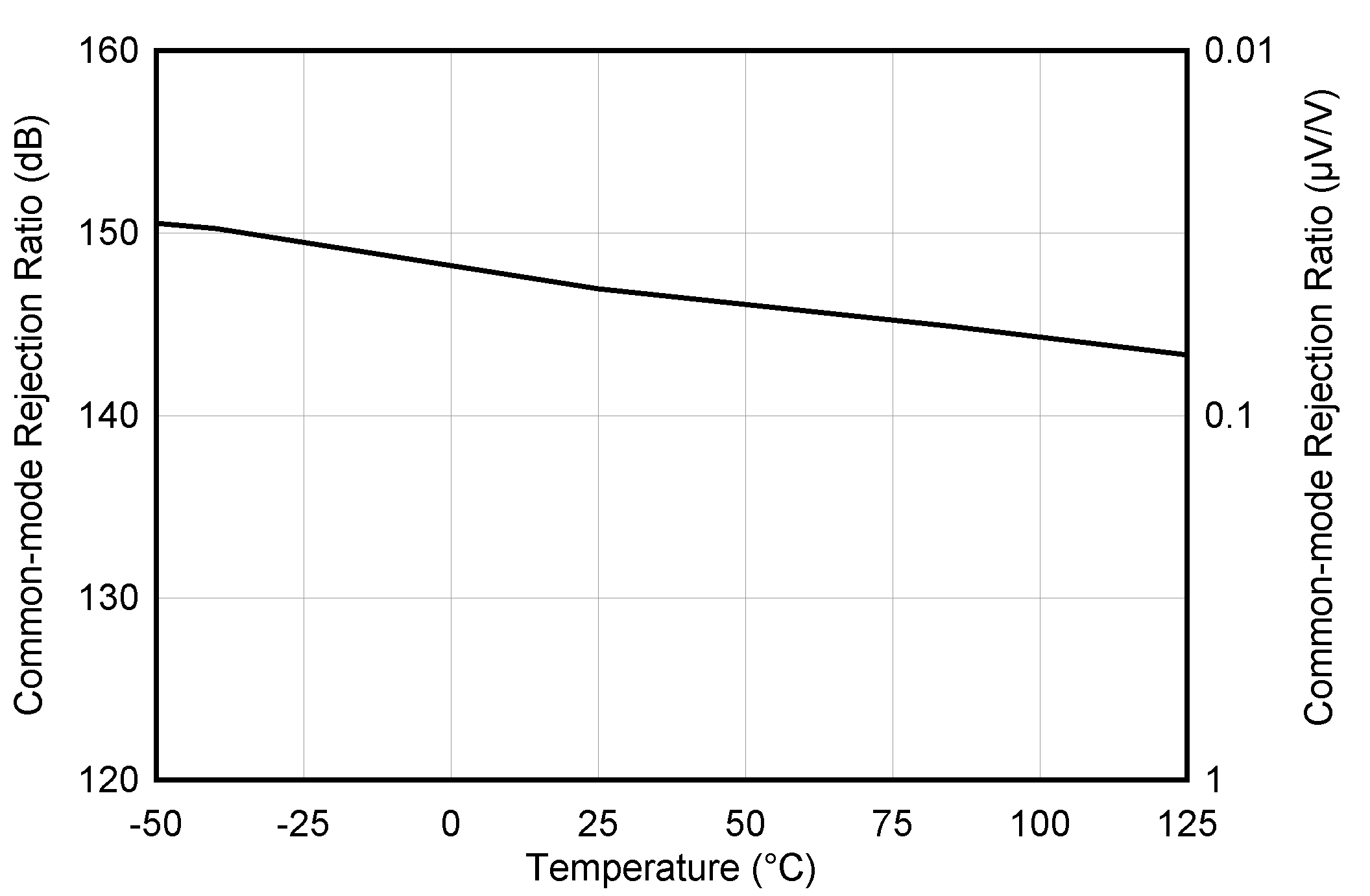
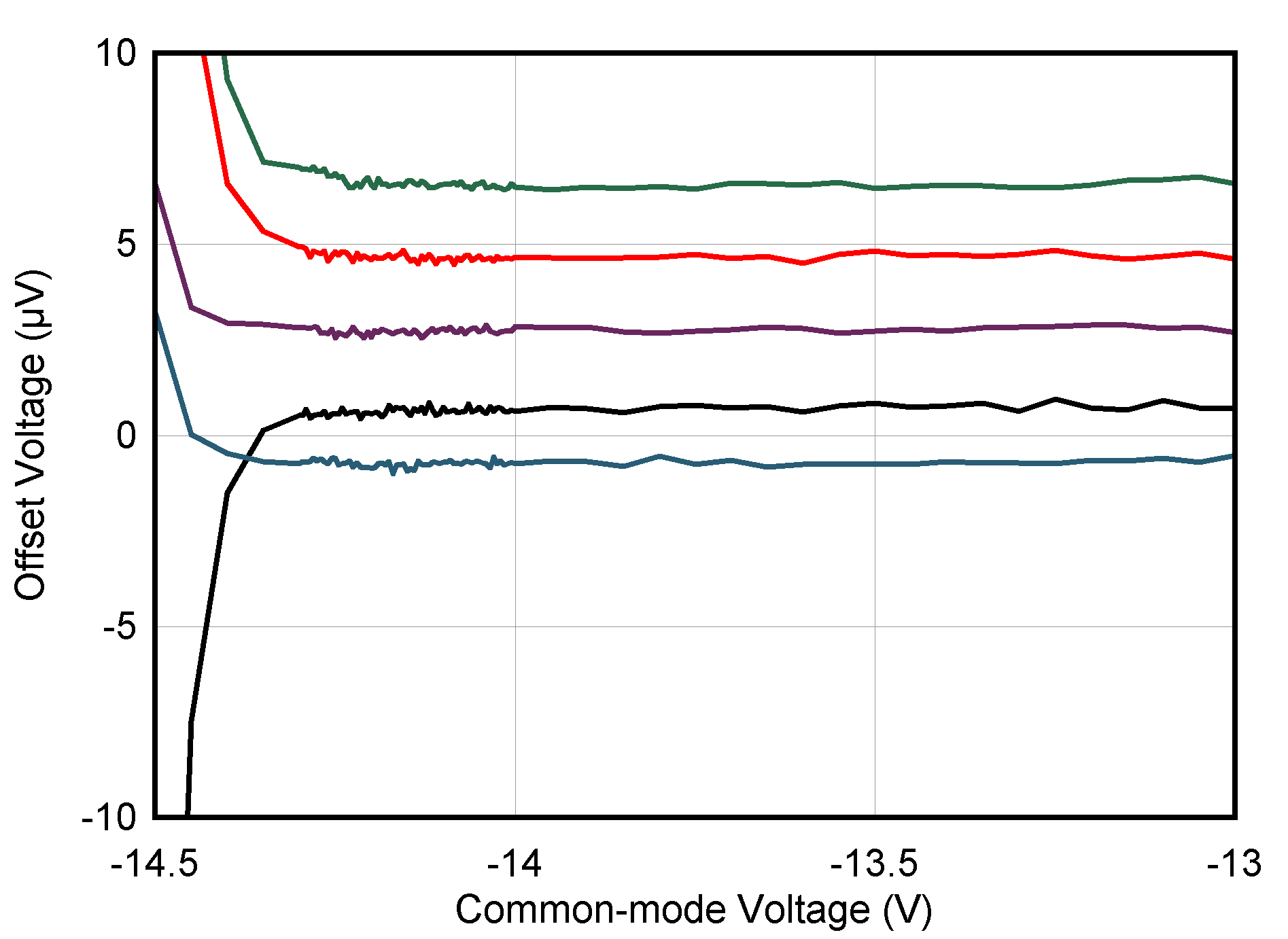
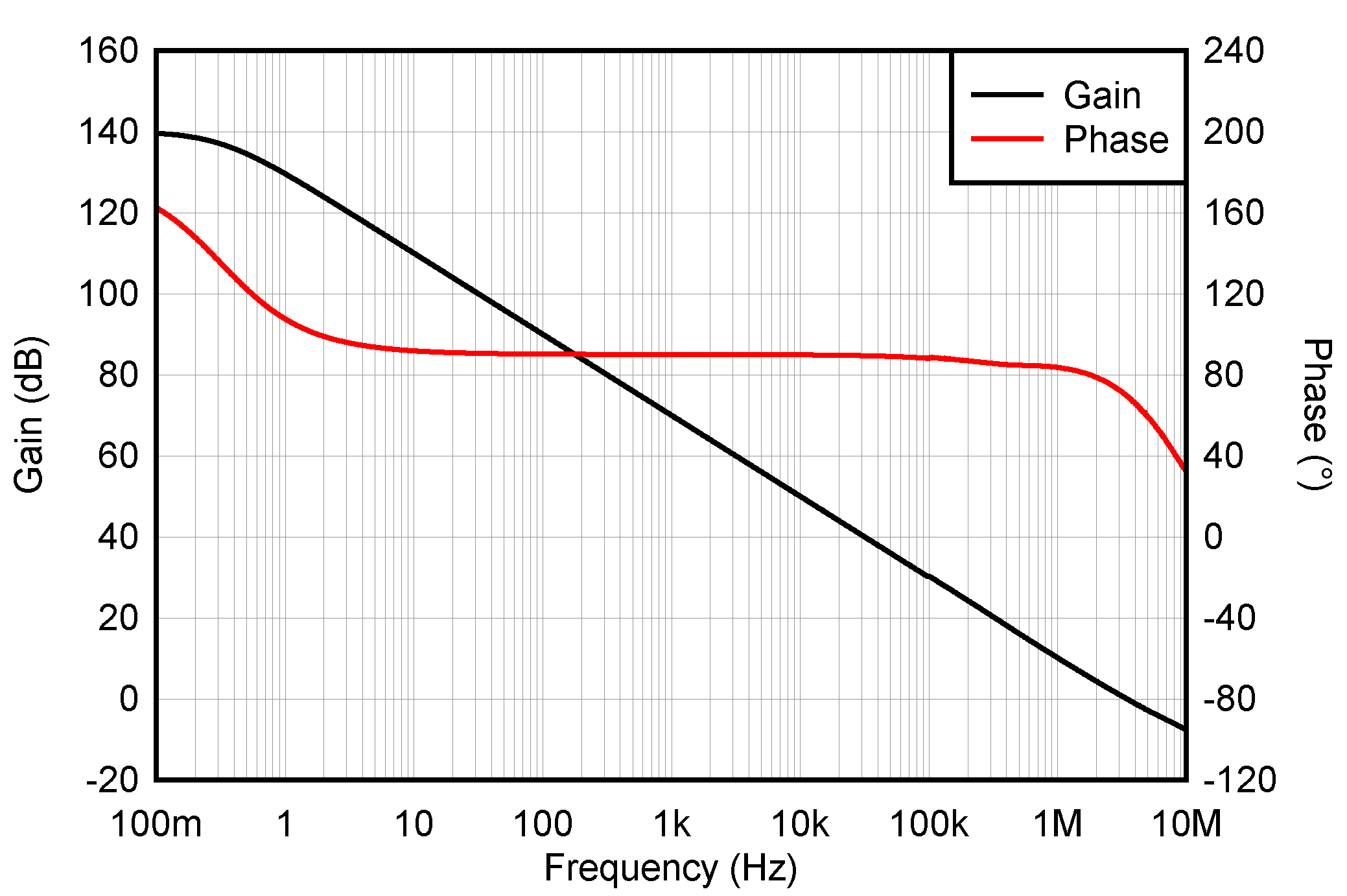
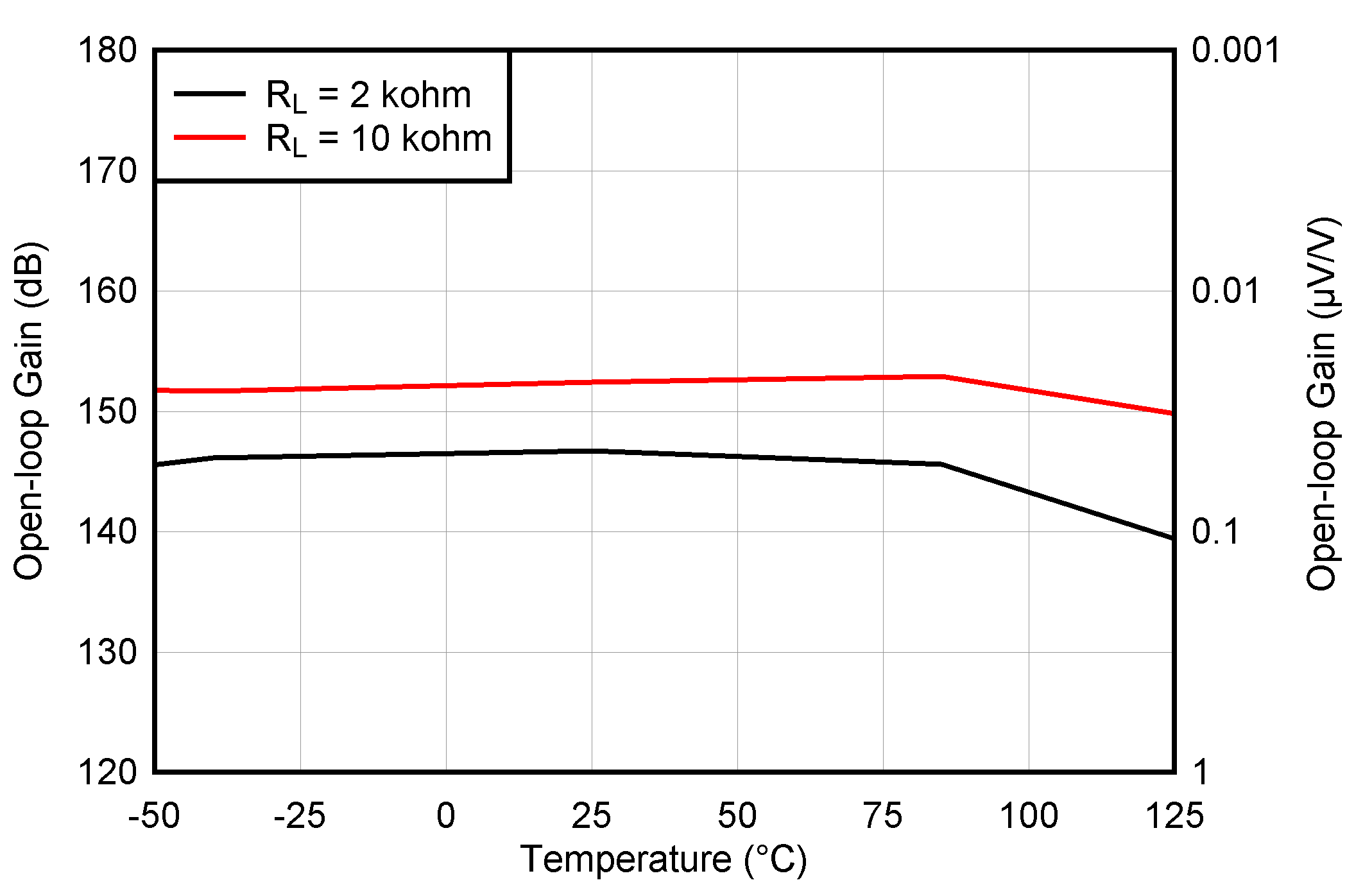




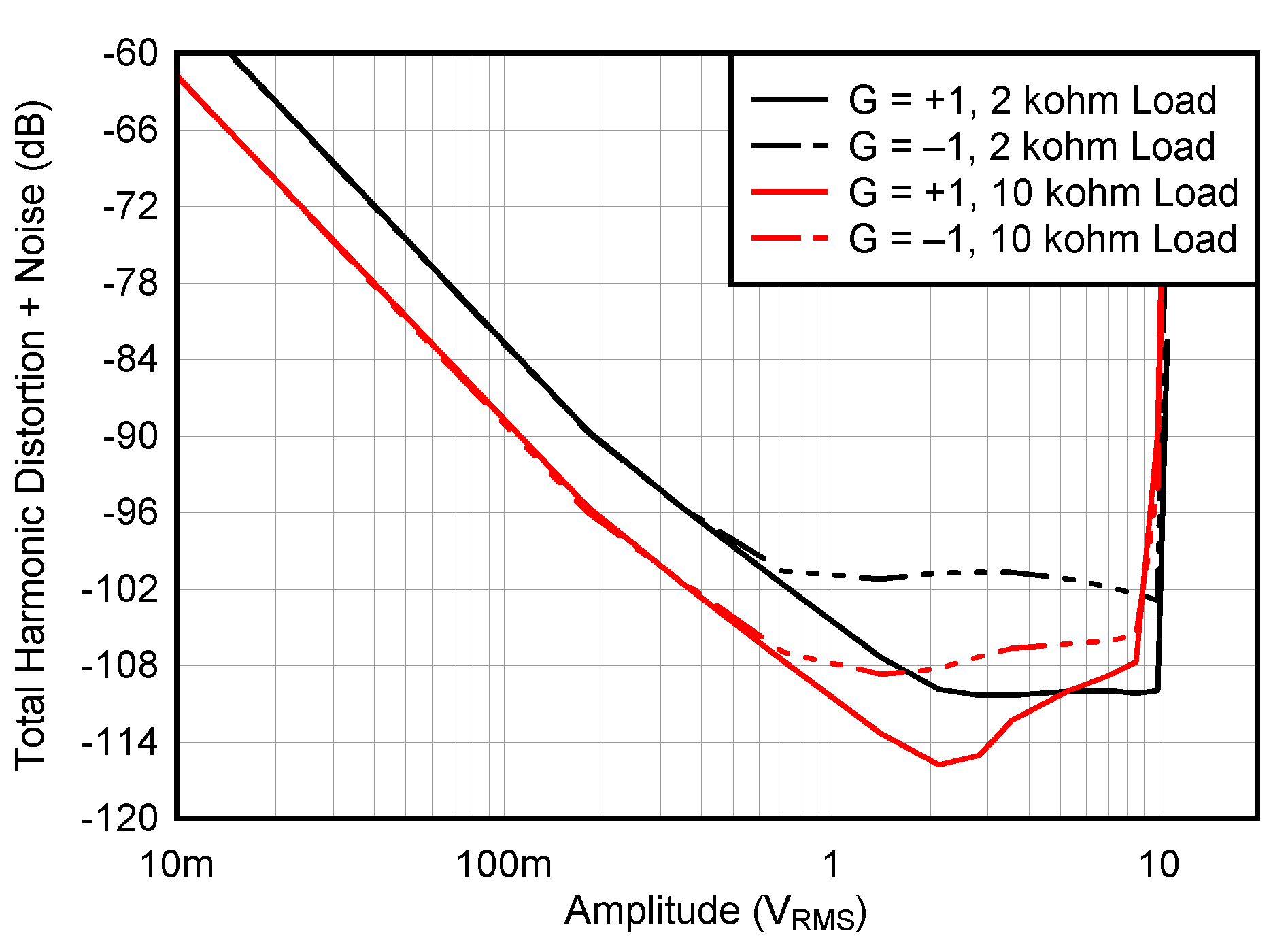
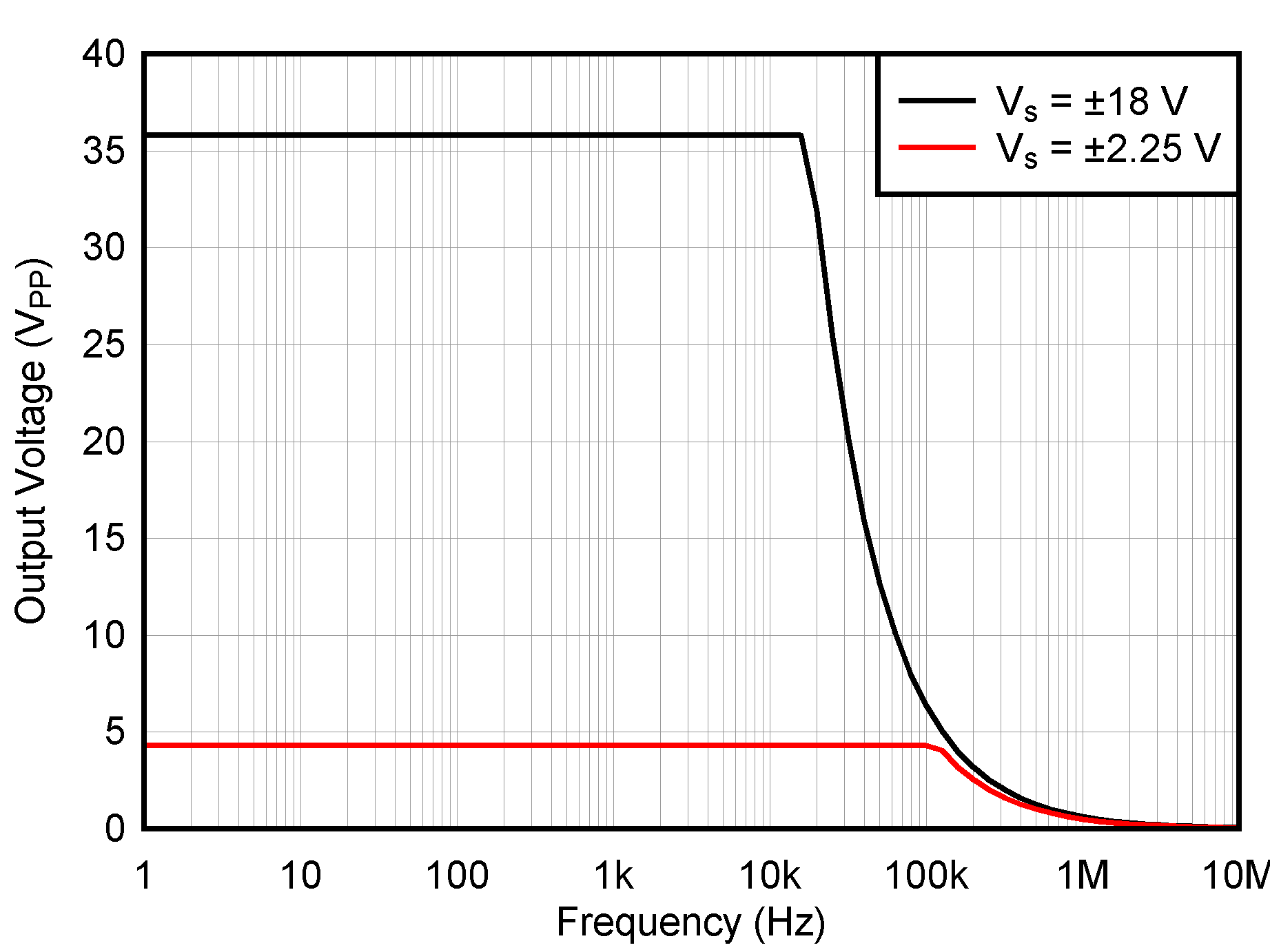
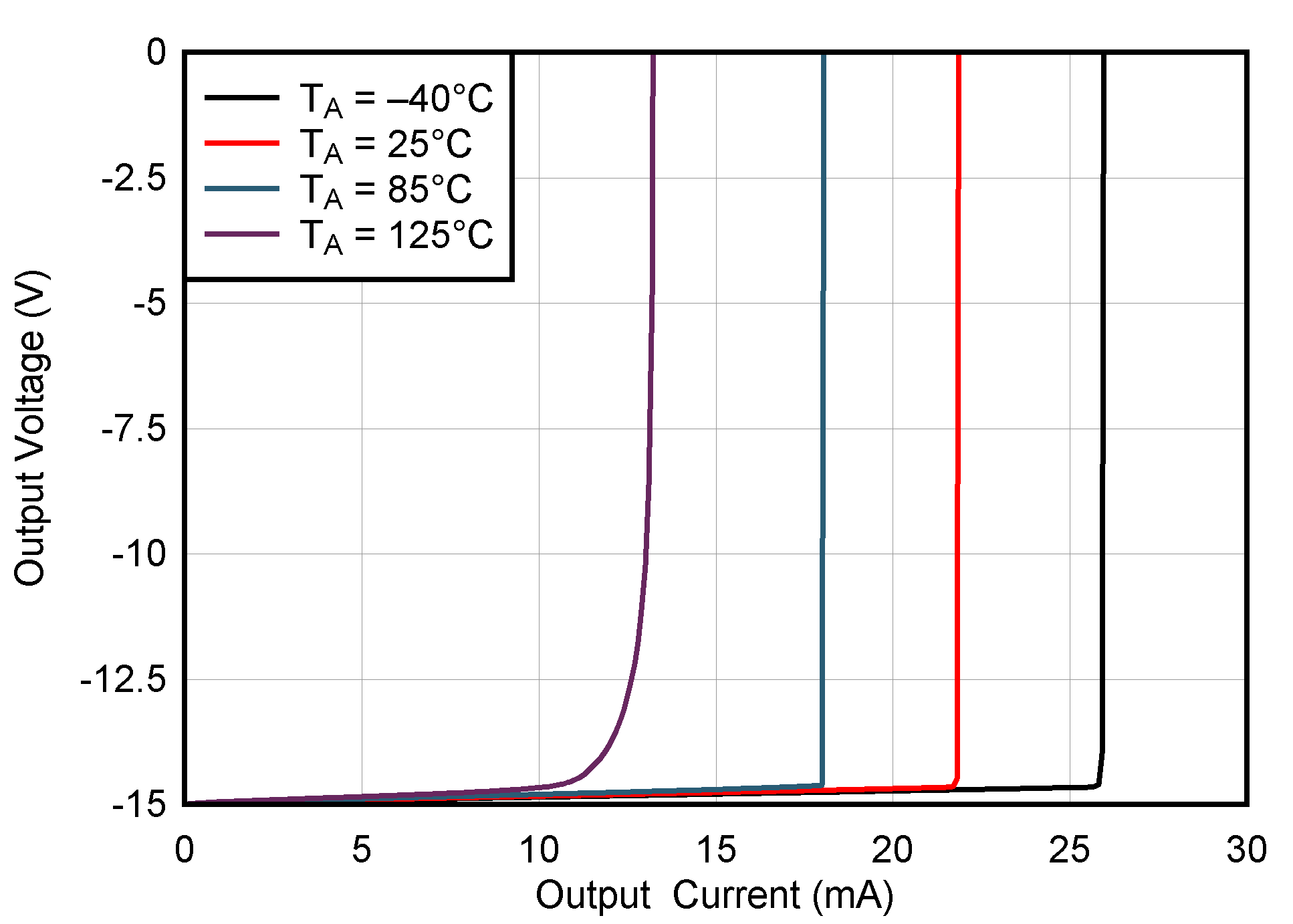
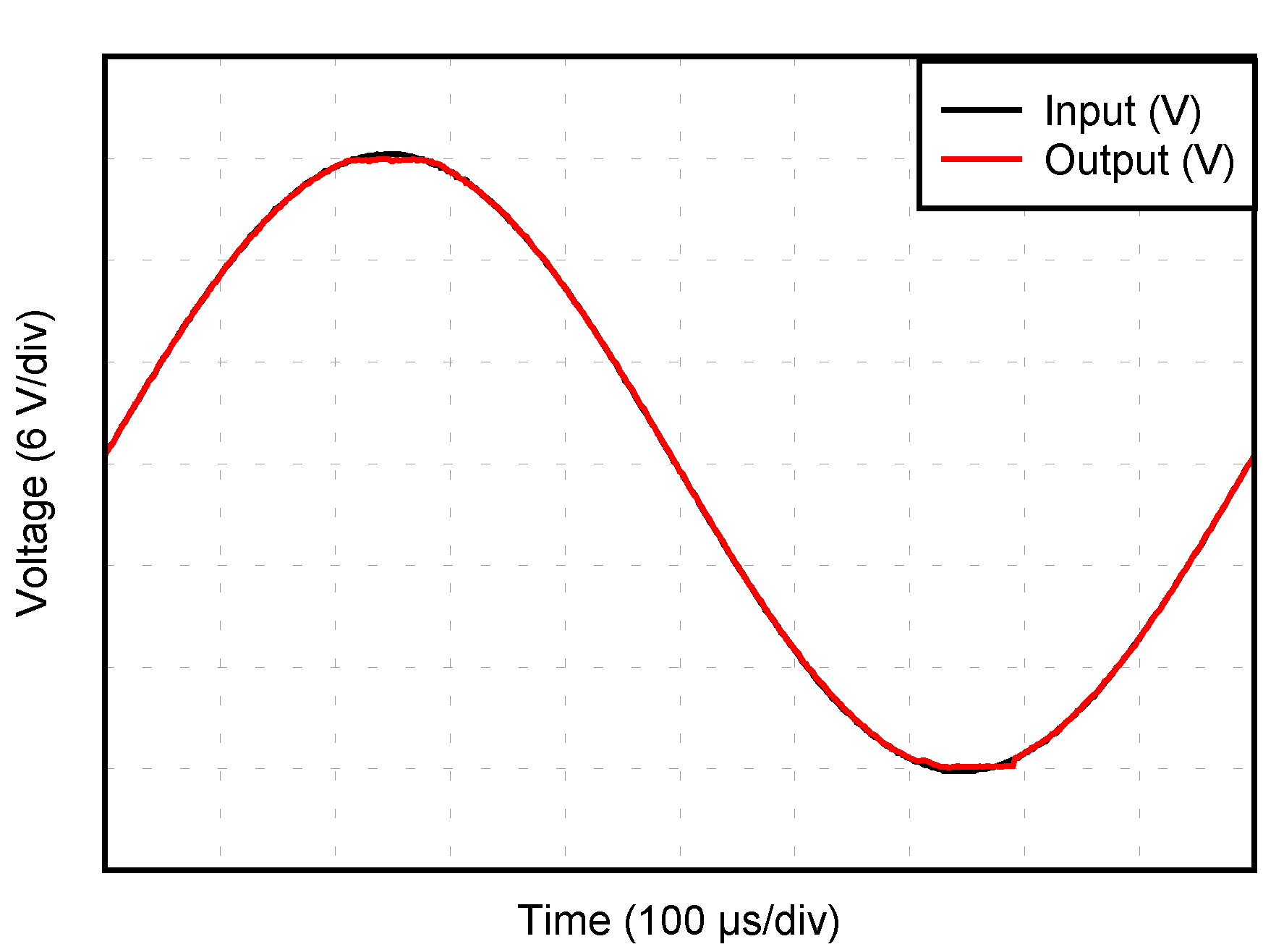

| Gain = –1 |

| Gain = –1 |
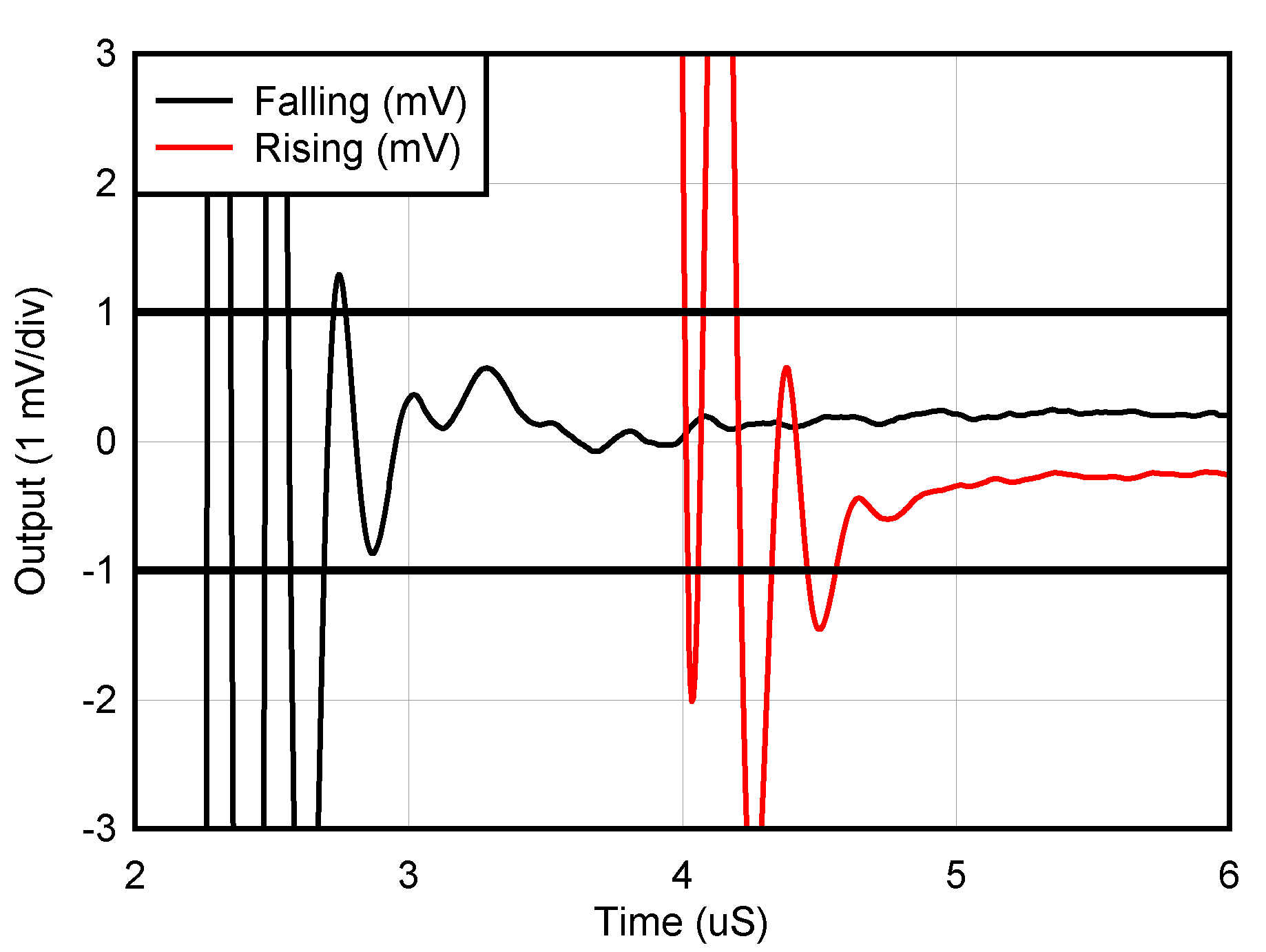

| Gain = –1 |

| Gain = –1 |

